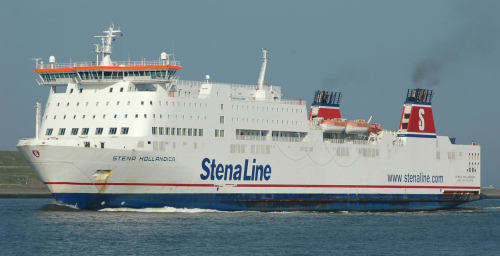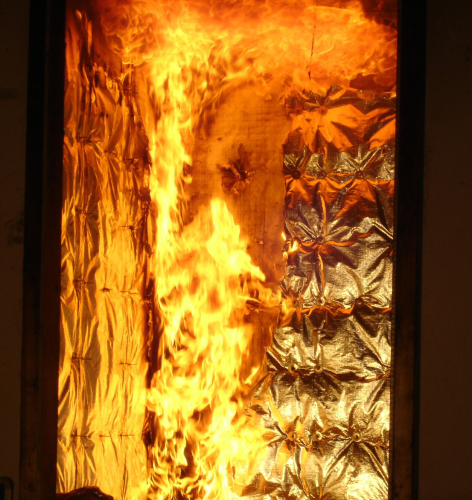

It has been known for many years (particularly in the composites industry) that reducing the superstructure weight of displacement ships can lead to significant improvements in operational efficiency. Higher speeds, reduced fuel costs, better stability, increased cargo/passenger loadings and a lower environmental impact are just some of the many potential benefits. However, until relatively recently the SOLAS (Safety Of Life At Sea) regulations were prescriptive in nature. As a result it was very difficult, if not impossible, to use composite materials on a large scale on vessels such as passenger ferries and cruise ships.
Things changed in 2002 when the SOLAS II-2 regulation 17 (part F) was adopted. This permitted a functionally based safety design to be used as long as the same level of safety could be achieved as if the prescriptive rules had been used.
Various feasibility studies have been undertaken since the ‘rule change,’ the most notable being the Swedish-based LÄSS Project (Lightweight construction applications at sea) that started in 2005. As result of this work, three of the LÄSS consortium members – the Swedish shipbuilder Kockums (builder of the ‘all-composite’ Visby Class corvettes), core materials manufacturer DIAB and fire protection specialist Thermal Ceramics have launched the Composite Superstructure Concept (CSC).
This is a commercialised superstructure construction system that is expected to have widespread application in both passenger ferries and cruise ships.
There is little doubt that if this type of concept is adopted by ferry and cruise ship operators on a large scale it will open up a new high volume application area for long fibre composite materials.
The LÄSS Project
Established in 2005, the aim of the LÄSS Project was to rejuvenate the Swedish shipbuilding industry by developing technical solutions for the use of lightweight materials in commercial ships (both displacement and high speed craft). The consortium behind the project is made up of representatives from the Swedish shipping industry, European materials manufacturers, Swedish universities and research establishments and classification societies – more than 25 organisations in total. Funding for the project is provided by the participating members and VINNOVA (the Swedish Governmental Agency for Innovation Systems). A total of six design solutions have been the subject of exhaustive investigation, including an extensive fire testing programme.
One of the most critical elements in achieving approval of composites for use in commercial ships is, of course, fire safety. Large-scale furnace trials have been carried out at the Swedish facility of SP Fire Technology. Actual tests have included 60-minute deck, 60-minute bulkhead, room corner test, tests of door and window sections and a large-scale test on a fibre reinforced plastic (FRP) sandwich structure including cabins and corridor. These tests clearly showed that an FRP structure that featured a lightweight fire insulation layer (e.g. the Composite Superstructure Concept) could be used for both decks and bulkheads and would meet the aims of the SOLAS regulations. Further testing also showed that the fire regulations could be met even when penetrations were made through the bulkheads and decks.
A detailed quantitive fire risk analysis on a variety of different fire scenarios was also performed to demonstrate that the systems met safety requirements.
Two of the lightweight solutions – a ro-pax (roll on/roll off passenger) ferry and a freighter – involve the replacement of the steel superstructure with one made from lightweight sandwich composite materials. The ro-pax ferry study was based on the 188 m Stena Hollandica. The following design philosophy was adopted. The original spacing between stiffeners was kept but all plates, longitudinals, transversals and girders would be replaced by equivalent glass reinforced plastic (GRP) components.
- The foam sandwich superstructure panels were designed to be produced by a vacuum resin infusion process.
- The weight-optimised superstructure would be subordinated in favour of yield ability.
- The translation of global loads in the superstructure would be restricted.
- The existing hull structure would be used for load translation.
- The superstructure would not carry any global loads.
- It would be designed according to DNV (Det Norske Veritas) regulations.
The results of this study showed that the sandwich composite alternative (including the fire protection layer) was more than 60% lighter than the original superstructure. This fire protection is intended to provide for the whole superstructure a full “60 minute fire integrity and insulation” level (A60 equivalent) with there being no contribution from the combustible elements of the composite structure during the first 60 minutes of a fully developed fire.
Furthermore, a life cycle cost (LCC) analysis revealed that the additional initial cost of the composite approach could be recovered in less than two years and the revenue increases (assuming a 25 year service life) could amount to more than US$65 million at current prices. This figure could be further augmented by the fact that maintenance costs (for the superstructure) would be substantially reduced as a result of the virtually ‘maintenance-free’ nature of sandwich composites.
It may come as a surprise to some people that the composite alternative was also the more environmentally friendly option. Detailed life cycle analysis (LCA) studies showed a better outcome than steel or aluminium with an environmental impact of 10% per tonne/km.
The LÄSS project is set to continue with a new study that involves the replacement of five decks on a 300 m cruise ship with a sandwich composite solution. Classification society DNV will be involved in the study. DNV is taking part in the project as a result of cooperation between LÄSS and the EU project DE-LIGHT Transport.
Composite Superstructure Concept
The Composite Superstructure Concept is one of the first tangible commercial developments that results directly from the LÄSS Project. It is a high strength, lightweight sandwich composite construction system that comprises a structural core to which glass or carbon fibre skins are securely bonded using an industrialised resin infusion process. The final stage of the manufacturing process is the application of insulation to the laminate surface to provide the required level of fire protection.
By varying the core and skin thicknesses and properties, a fully integrated super-structure (decks and internal/external bulk-heads) can be designed and engineered that meets both the global and local loading conditions. Compound curves can be readily accommodated thereby achieving a smoother surface finish. The foam sandwich composite approach was taken because it offers much higher strength to weight and stiffness characteristics than single skin laminates.
In-depth research shows that the concept is a very viable alternative to existing structures built from steel or aluminium. It allows much higher cargo volumes and/or significant fuel savings as a result of the substantial reduction in deadweight – more than 50% when compared to a steel superstructure.
Recent LCC studies show that these savings can translate to an operational amortisation period of less than two years.
Furthermore, the specific reduction in superstructure weight improves vessel stability. In addition, the finished structure is not subject to rust or corrosion.
With the major fire testing complete, the three partners are now in a position to open constructive dialogues with interested parties such as naval architects, ship builders and classification organisations. It is expected that a fully approved system will be available by the end of 2009 and will be in service the following year.






